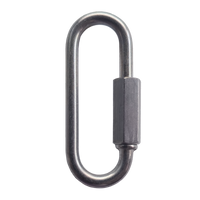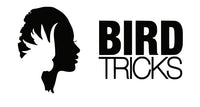
Short-billed Corella enjoying Eucalyptus nuts.
It was like Christmas for my birds at my place last week. It was what I fondly refer to as “Psychotic branch week”. It’s usually an annual event, although sometimes it happens twice a year. It’s not planned (I wish it was) and it isn’t consistently at the same time of year.
It’s not general knowledge but it is actually illegal to take branches and foliage from trees that are on public property in most parts of Australia. It’s regarded as vandalism if you go to a local park and cut a few branches for your birds. It’s why I have trees in my yard, that have been planted just to be hacked up by me. I’m constantly replanting.

Wild short-billed Corellas playing.
Once or twice a year though, the council send professional tree loppers around and they prune the life out of the local trees. I make it sound like they damage the trees and frankly they generally do. The trees are cut into unsustainable shapes to accommodate power lines. It’s rather stupid planting such tall trees under power lines when you think about it, but this seems to be my local council’s preferred method of planting.

Trees are cut into unnatural shapes in order to accommodate power lines
It’s great from my perspective because this usually means hacking off the crest of the tree. It tends to be a bird’s favourite place to sit and consequently I find the best foliage and branches come from 20 metres up.
So when the trucks pulled up in my area last week, I hooked up my trailer and followed them. There’s nothing illegal about following tree loppers around and asking for the branches before they get thrown in the chipper. In fact, if you need branches you can ring your local council and find out when and where a tree hacking expedition is going to be. It might not be your area, but it’s usually worth the drive if you need the branches badly enough.

Ensuring tree loppers will always have work in my area, the council has recently planted a large number of eucalypts under power lines, (instead of planting them on the other side of the street where there are no cables and where no pruning is necessary).
Then at my place ‘Psychotic branch week’ begins. I don’t strip back the branches I bring home to make decent perches. I don’t cut them to size and I don’t carefully arrange them. The one thing that I actually do is thoroughly hose them off and make sure that there are no spiders and evil creepy crawlies, which might bite a bird. Then I cram as many branches, (foliage and all) into my aviaries as I can fit and I let the birds do the rest of the work for me.
This sets my birds off on a massive foraging spree. They strip leaves, twigs, flowers and nuts off the branches more efficiently than I could ever hope to. After 2-3 days, the bird room is swimming in leaf litter and I’m left with the skeletal remains of branches.

A fresh supply of branches...
It is those skeletal remains that I use as primary perches for my birds for the following year. It’s then that I cut them to a desirable size and secure them in carefully arranged locations. I store some in a shed for future cage rearrangements. These become my core perches that I will hang fresh foliage from.

An example of how I've used 'skeletal' branches in the past.
Now a couple of warnings: The first is that I’m not shoving random branches into my aviaries. My local council plants native trees and most (but not all) are bird safe. It’s important that you know exactly what you’re putting in your cages and are sure that it’s safe.
If you hadn’t guessed, I’m one of those irritating people that goes on a dog walk and rattles off the scientific name of every plant I pass just to annoy whoever might be stupid enough to walk with me. That knowledge comes from multiple horticulture certificates. (My first was one in bonsai at the age of 5 – my grandmother was determined to turn me into a clone!) I worked at a specialised nursery for 5 years and I’ve studied botany at University. Apparently that means I have a green thumb! It also means not many people like walking with me!

Male eclectus parrot enjoying 'psychotic branch week'
The second warning that I think needs to be covered is that even if the tree is considered safe – it may not be safe for your specific bird. Birds get allergies, just like humans do and some things are species specific.
My flock are all native to Australia, with two exceptions. My Eclectus is not the Australian subspecies, and Blue and Gold Macaws are definitely foreign! Eclectus parrots are found in Northern Australia, so Pepi isn’t such a worry – he usually copes with all things native. My macaw on the other hand? Well to be honest he hasn’t done so well with native Australian foliage.

Fid only tolerates small amounts of eucalyptus.
My Blue and Gold’s first encounter with Eucalyptus gum nuts resulted in green vomit that seriously freaked me out. He jumped onto the pile of provided gumnuts with a ferocity that was making the galahs stand back. It was interesting to observe because my galahs are bossy when they want something and they really wanted these nuts. He loved them and ate quite a few large ones and would have happily kept going but I pulled him off and distracted him with a toy.
Hours later Fid was vomiting. It wasn’t particularly bad, but it really did worry me. I believe it was a combination of over indulging (greedy pig that he is) combined with a species-related intolerance. He was his normal self again by the next morning and somewhat grumpy about the bland diet I stuck him on while I observed him to make sure!

Fid eating gumnuts - small numbers seem to be fine.
It makes sense really. Eucalyptus trees are basically toxic to a lot of animals. Native species that rely on them as a food source have different adaptations to help them tolerate any toxins. There is a reason why Koala Bears (who eat specific species of Eucalyptus leaves) are always asleep when you see them. They sleep for roughly 18 hrs a day because it helps their body metabolise those toxins. Similarly my galahs have a good solid sleep in the afternoon after eating gumnuts and it wouldn’t shock me to learn that this helps them digest those same toxins.
In the wild, some Australian parrots frequently eat clay to help absorb toxins acquired after eating ‘paddy melons’. Just because a bird eats something in the wild, doesn’t mean it can eat it in a cage. It’s just possible that the wild birds are eating something or doing something to make a ‘food’ safe that a caged bird can’t replicate. It’s worth keeping that in mind.

A wild corella telling me to go away.
So Fid – well he missed out on psychotic branch week. It’s too dangerous to shove a huge amount of native foliage in with him. He can tolerate small amounts, but I can be sure he’s not like the other birds. Don’t feel too sorry for him though. Fid had psychotic shredded paper week instead. He still got to make a mess.
I think I’ll be cleaning for a while!!!
Mel Vincent works as an animal rehabilitator out of Australia.



2 comments
Do you happen to know if eucalyptus olida – strawberry gum – is safe for budgies? I couldn’t find info anywhere.
The little Corellas that you are talking about flock in thousands near mr in a town (suburb) called Old Noarlunga. I have started a campaign to stop them from being culled this year. Please sign it and pass it around http://www.communityrun.org/petitions/campaign-for-corellas via @communityrun
Leave a comment